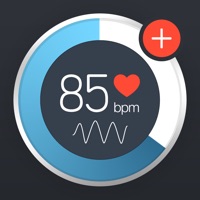
Contact CardioSmart Heart Explorer Support
Company Name: American College of Cardiology
About: The American College of Cardiology, a 49000-member nonprofit medical society.
Headquarters: Washington, District of Columbia, United States.
CardioSmart Heart Explorer Customer Service 💢
The following contact options are available: Pricing Information, Support, General Help, and Press Information/New Coverage (to guage reputation). Discover which options are the fastest to get your customer service issues resolved.
NOTE: If the links below doesn't work for you, Please go directly to the Homepage of American College of Cardiology
Verified email ✔✔
E-Mail: accfdeveloper@acc.org
Website: 🌍 Visit CardioSmart Heart Explorer Website
Privacy Policy: http://www.acc.org/footer-pages/privacy-policy
Developer: American College of Cardiology Foundation
More Matches
Get Pricing Info for American College of CardiologyContact American College of Cardiology! Or Contact Support
Need help using American College of Cardiology? Try their Help Center now!
American College of Cardiology in the News!
Social Support and Contacts
American College of Cardiology on Facebook!
American College of Cardiology on Twitter!
American College of Cardiology on LinkedIn!
3 Most reported problems 😔💔
No good
by Dokyjun
Can't even login!!!!!!!!
Incredible
by Bobackz
Most amazing app for clinic and hospital rounds. Patients love it.
Great patient engagement tool, teaching co-workers, students
by Sakionjimbo
I've thoroughly enjoyed this app sponsored by the ACC. My patients, to a one, have had "aha!" moments when they finally can orient procedures that they have had done to a 3D moving heart. It is a great pre-procedure teaching app as well.
One can freely move from a horizontal orientation for basic anatomical/physiological blood flow display, (where patients can see a 4 chamber view, left and right heart blood flow, examples of AF, VF, mitral valve prolapse on a animated model) to a vertical display where one can "drill down" from a heart behind rib cage view (best orienting view to get started!). With a quick flip of the finger, the ribcage disappears, and each successive layer and function of the heart can be in turn viewed, discussed, rotated 360 degrees, and/or labelled. This orientation provides a great animated version and view of the epicardial coronary arteries (with and without heart tissue), coronary perfusion regions (to better explain what muscle/region is affected by ischemia or infarction), coronary veins, electrical conduction, valves, and right and left heart chamber structures separately.
Done there? No. There is a media gallery section with great short vids ranging from side-by-side views of the heart and EKG in normal sinus and AF, ICDs and where they sit in the body, pacemakers and their leads, ablation procedures, VF, etc. The short video on coronary plaque development and eventual rupture is an eye opener for patients, students, medical staff who are unfamiliar with coronary pathophysiology. One can even "stent" the coronary artery right in front of the patient (lots of nods of understanding occur at that moment) and this makes it much easier to explain the need for antiplatelet therapy post stent (including, more importantly, driving the point home of not missing a dose or stopping it, just because..).
Lastly, there is a diagrammatic view of the heart in which the clinician can draw upon, and select areas of any of the major coronary arteries where a cross-sectional view "pops" up and one can select the approximate amount of stenosis for that section (graphic cartoon). Then, one may use the drawing choices to write in the actual % stenoses as well the ability to free hand any other notes one so chooses to write. Finally, this last app page can be emailed to the patient. This serves many purposes: 1) allows the patient to review what was discussed 2) allows the patient's family to see what was discussed and cause less distress to the patient when asked and they would normally have to respond, "I don't really remember what the doc said..."
Now, is it perfect. No. But, this is because Cardiosmart does need input from "real" users who will provide feedback to them of what we want included. As it stands, pretty nice app, beyond "Gee Whiz" and highly interactive with patients. I recommend this app with absolutely no reservations. BTW, it is provided as part of our ACC memberships. One would be quite silly indeed to pass up this app if one owns an iPad mini or regular sized iPad. If anything, try it out, your kids will enjoy it. Mine do.
Have a Problem with CardioSmart Heart Explorer? Report Issue
Why should I report an Issue with CardioSmart Heart Explorer?
- Pulling issues faced by users like you is a good way to draw attention of CardioSmart Heart Explorer to your problem using the strength of crowds. We have over 1,000,000 users and companies will listen to us.
- We have developed a system that will try to get in touch with a company once an issue is reported and with lots of issues reported, companies will definitely listen.
- Importantly, customers can learn from other customers in case the issue is a common problem that has been solved before.
- If you are a CardioSmart Heart Explorer customer and are running into a problem, Justuseapp might not be the fastest and most effective way for you to solve the problem but at least you can warn others off using CardioSmart Heart Explorer.









